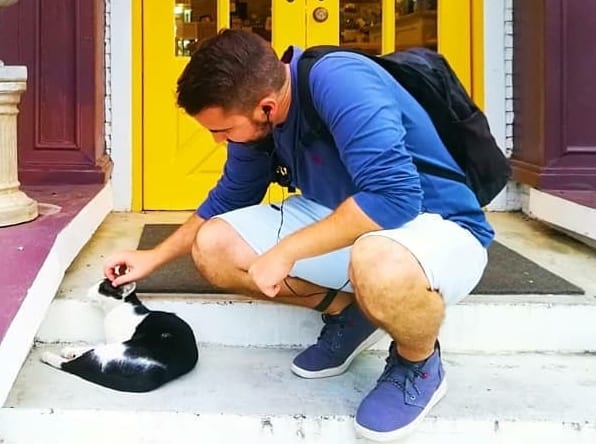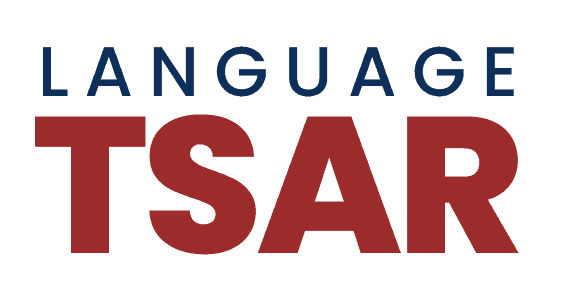As an avid language learner and superpolyglot, I find pronunciation to be my weakest point.
In particular, hearing the various sounds that differ from those found in my native language, English, had proven elusive for me when I first started learning new languages.
My first foreign language was French. In the beginning, I was tormented by the sounds of the language of Voltaire and in the video below with my Belgian friend, Sébastien, you will get a taste for the difficulties that French pronunciation poses for a English native speaker.
Overcoming these pronunciation difficulties in a new language’s sound system has been a long and arduous journey for me and in this article I’m revealing how I approach improving my pronunciation in each language that I tackle.
1. Listen
The departure point for improving your pronunciation is to start by identifying and listening to the sounds in your new language that are not found in your native language or in other languages that you speak.
At first, you will probably not be able to hear these new sounds. What you will hear is an approximation with sounds that you are already familiar with.
For example, in Russian the letter ы sounded to me like the English letter ‘e’ when in fact that sound in English is closer to the Russian letter и. I had to train my ears and later my mouth to be able to make the distinction between ы and и when listening to and speaking Russian.
In order to get some forewarning as to the new sounds that you will encounter, I recommend taking a look at the International Phonetic Alphabet (IPA) for the new language. That way you can see in visual form what the new sounds are compared to the sounds that you are already familiar with.
You can take a look at the IPA here.
2. Work those mouth muscles!
Believe it or not, your mouth also needs a workout! 😂😂 That’s because you will need to train it to move in a new way in order to make the new sounds.
It may even be a bit tiring to make the new sounds in the beginning. Your mouth will not be used to making the new movements so the muscles lack the advantage of ‘muscle memory’ in order to minimize energy and effort – just as any athlete knows from working out in the gym. 💪🏻💪🏻
Again the IPA is your friend here. With the IPA charts and videos you can study where the sounds need to be made in your mouth and which muscles are necessary to focus on.
3. Practice the basic sounds with a tutor
After I’ve identified the new sounds and how they should be made in theory, the next thing I do is make sure that I practice these sounds with a native speaker.
It is essential to correct any serious pronunciation mistakes right at the beginning in a new language to ensure that they are not fossilized by repetition.
This was a big issue for me personally with French as I had mispronounced many sounds for a decade before having them correctly with the help of a private tutor. Believe me, it’s best to nip these issues in the bud before they become harder to correct later on.
I usually look for private tutors here on italki where you can get some bonus starter credit via the link.
You will also learn more about how I recently used an italki tutor for my Learn Ukrainian Mission in the video below.
4. Prosody
“Prosody” is basically the combination of intonation, tone, stress, and rhythm in a language. You may have noticed that even if a foreigner speaks your language with an accent, they are perfectly understandable if they are copying the correct rhythmic patterns inherent in the language, i.e. the prosody.
Some languages like Italian and Ukrainian are very melodic as the pitch and intonation rises and falls several times in a typical sentence. Other languages like German and Dutch are very flat in terms of rhythm with perhaps only one rise and fall even in a long sentence.
Applying the Italian prosody to German sounds entertaining to German ears as it is so exaggerated compared to the normal rhythm. Applying German prosody to Italian kills the rhythmic beauty of la bella lingua italiana (‘the beautiful Italian language) as it will sound extremely dull and monotonous to a native Italian.
You can read about the prosody of the new language as you start learning it but it’s also important to pay attention when listening to native speakers to notice the prosody of the language and imitate it when you speak.
5. Practice with native speakers!
Not just for pronunciation but for improving your skills in a language, it’s important to be able to live your life (in part) through the target language. That way you’ll improve your linguistic and cultural knowledge without deliberate effort.
Building up a network of native speaking contacts (either in real life or virtually) will help you with your pronunciation as you push yourself outside your comfort zone and are exposed to the myriad of accents and registers that native speakers will naturally use.
You can also choose a native speaker who like listening to in your target language and try to imitate the way that they speak. There are lots of ways to ‘speak’ as a native speaker. Pick a variety that appeals to you!
I always recommend traveling to countries where the language is spoken, attending local cultural events in your home town and taking a genuine interest in the people and their current affairs.
Languages are ultimately a medium of communication with real people so be sure not to ignore the human element to learning a language! 😀
6. Record yourself!
Yes, record yourself! Before I started vlogging on YouTube, I would have found this a bit odd to do but having reviewed a few dozen videos where I speak in languages other than English, it has been extremely enlightening.
It’s a lot easier to pick up on your mistakes once you are watching yourself speak as a detached third party observer. Audio and video recording allow you to do just that!
In the video below, I discuss this topic in more detail with the famous polyglot YouTuber, Steve Kaufmann, from Vancouver, Canada.
7. Periodically review
Reviewing your pronunciation periodically is essential to avoid slipping into mispronunciation habits. This can happen because once we feel comfortable in a language we then start to relax in it … perhaps even a little too much at times!
I recommend that you schedule some time to work on your pronunciation with a native speaker, whether that be a friend or an italki tutor, at least once a month when you have reached an intermediate level in the language.
Have you struggled with pronunciation? How have you tried to cope with the new sounds in a new language? Please let me know in the comments box below the article. I love reading about your experiences! 😀
For more help with pronunciation, check out the Mimic Method by clicking on the image!

Michael has been an avid language learner and traveler for many years. His goal with LanguageTsar is to discover the most fun and effective ways to learn a language. He is currently learning Japanese, French and Indonesian.



Comments are closed.